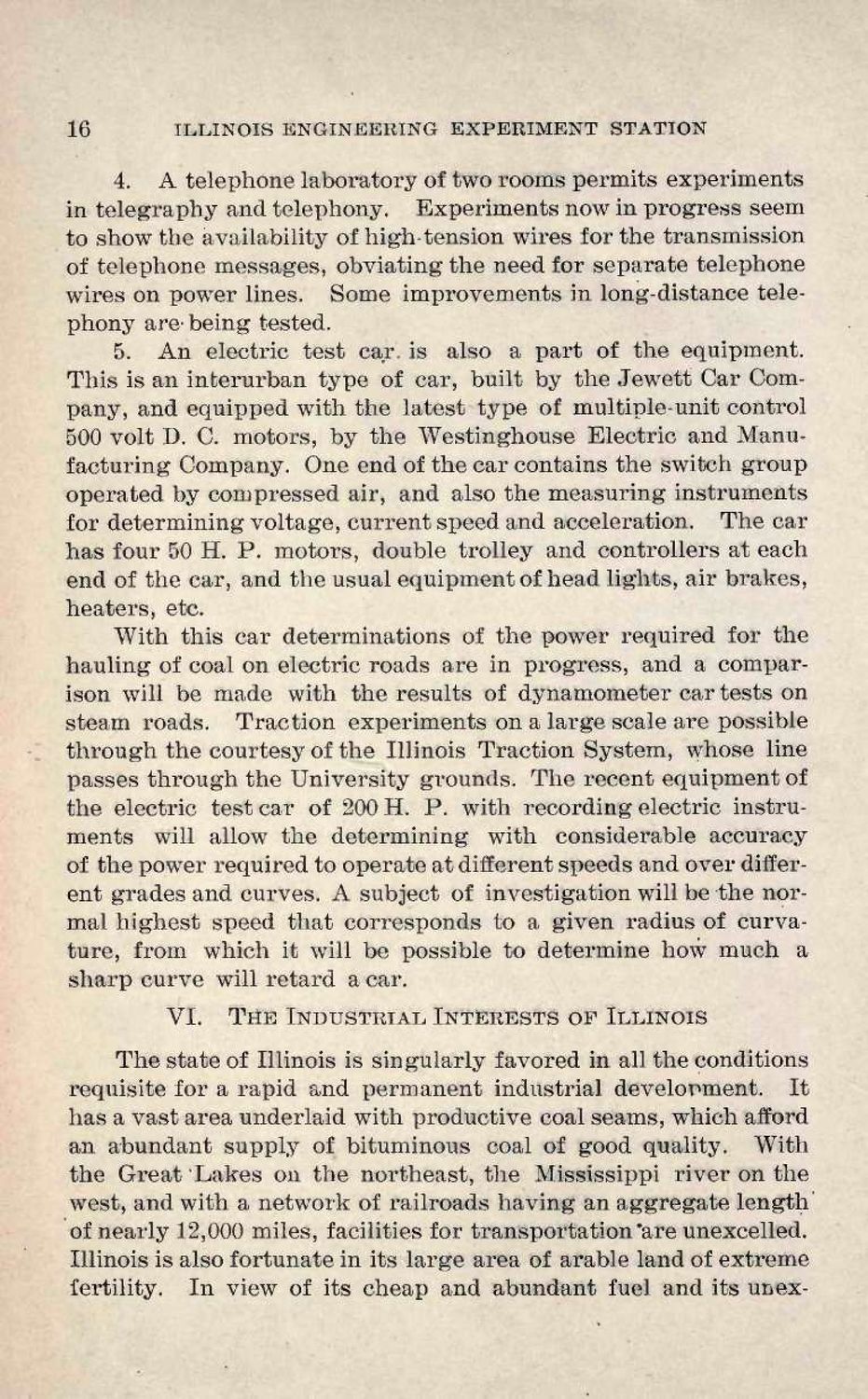| |
| |
Caption: Book - First Years of Engineering Experiment Station (1906)
This is a reduced-resolution page image for fast online browsing.

EXTRACTED TEXT FROM PAGE:
16 ILLINOIS ENGINEERING EXPERIMENT STATION 4. A telephone laboratory of two rooms permits experiments in telegraphy and telephony. Experiments now in progress seem to show the availability of high-tension wires for the transmission of telephone messages, obviating the need for separate telephone wires on power lines. Some improvements in long-distance telephony are- being tested. 5. An electric test car. is also a p a r t of the equipment. This is an interurban type of car, built by the Jewett Car Company, and equipped with the latest type of multiple-unit control 500 volt D. C. motors, by t h e Westinghouse Electric and Manufacturing Company. One end of the car contains the switch group operated by compressed air, and also the measuring instruments for determining voltage, current speed and acceleration. The car h a s four 50 H. P . motors, double trolley and controllers at each end of the car, and t h e usual equipment of head lights, air brakes, heaters, etc. With this car determinations of the power required for the hauling of coal on electric roads are in progress, and a comparison will be made with the results of dynamometer car tests on steam roads. T r a c t i o n experiments on a large scale are possible t h r o u g h the courtesy of the Illinois Traction System, whose line passes t h r o u g h the University grounds. T h e recent equipment of the electric test car of 200 H. P . with recording electric instruments will allow the determining with considerable accuracy of the power required to operate at different speeds and over different grades and curves. A subject of investigation will be the normal highest speed t h a t corresponds to a given radius of curvature, from which it will be possible to determine how much a s h a r p curve will retard a car. VI. T H E INDUSTRIAL INTERESTS OF ILLINOIS T h e state of Illinois is singularly favored in all the conditions requisite for a rapid and permanent industrial development. I t has a vast area underlaid with productive coal seams, which afford an abundant supply of bituminous coal of good quality. With the Great Lakes on the northeast, the Mississippi river on the west, and with a network of railroads having an aggregate length' of nearly 12,000 miles, facilities for transportation "are unexcelled. Illinois is also fortunate in its large area of arable land of extreme fertility. I n view of its cheap and abundant fuel and its unex-
| |